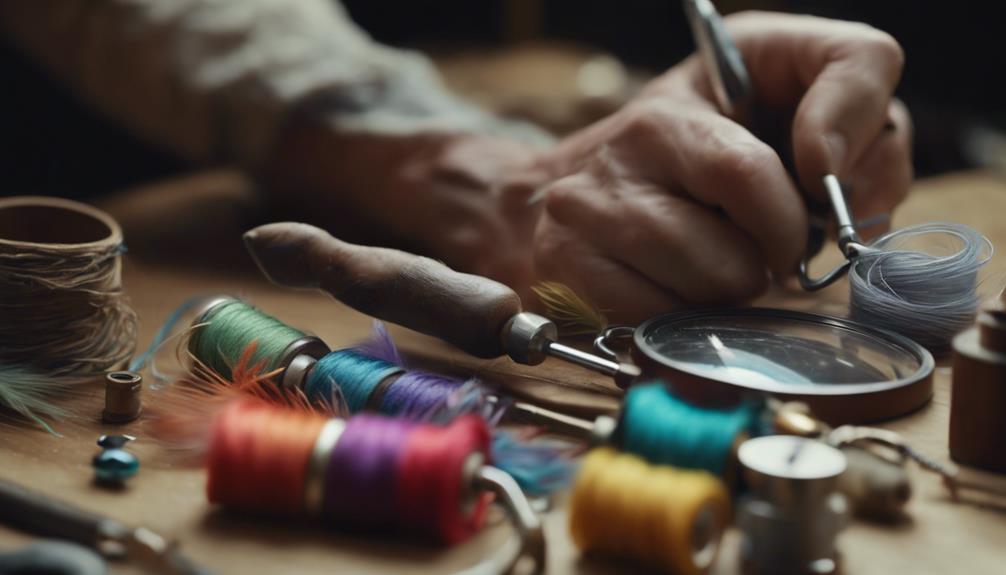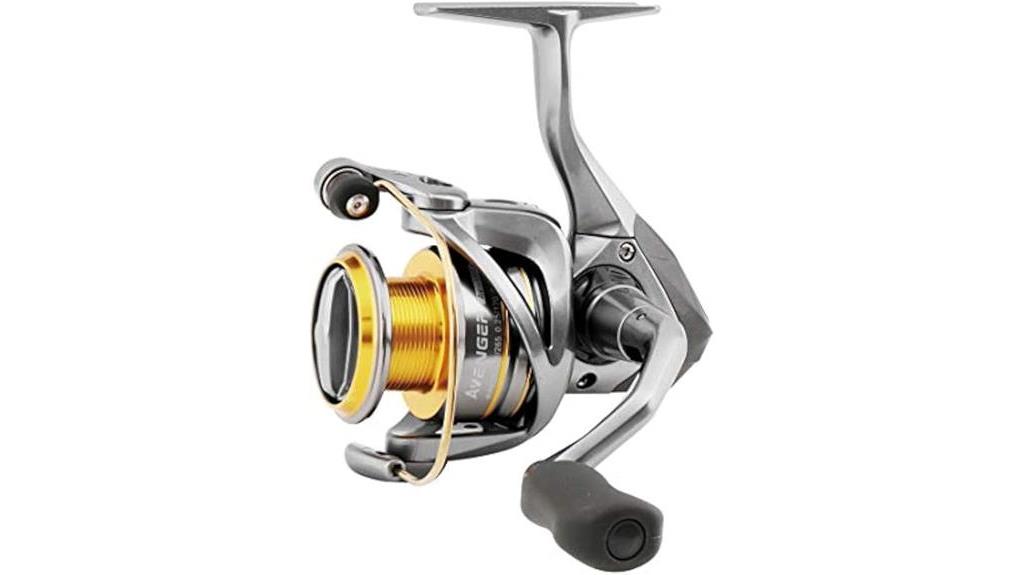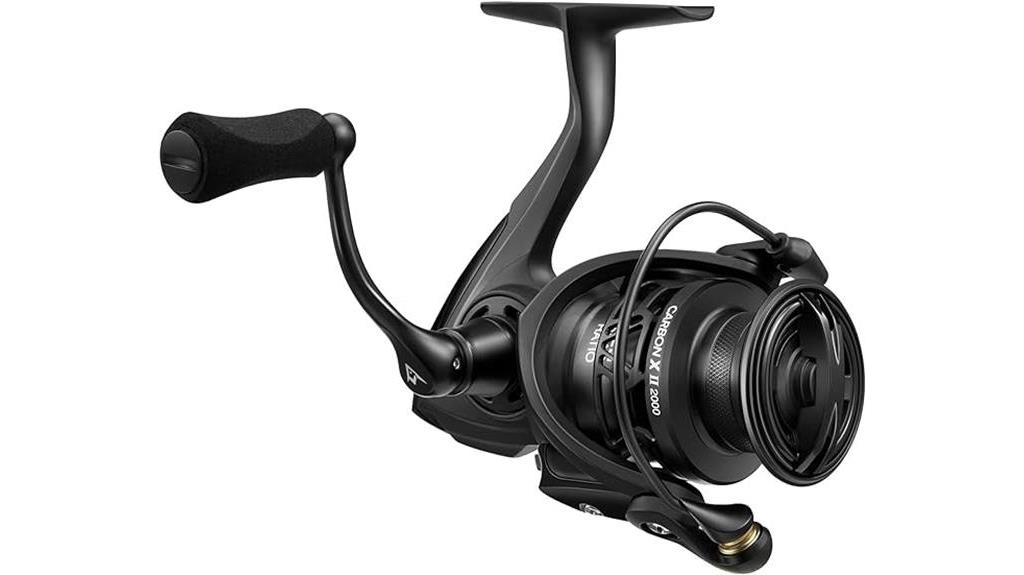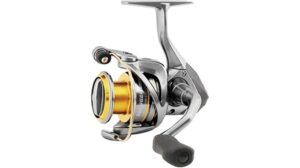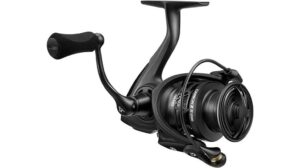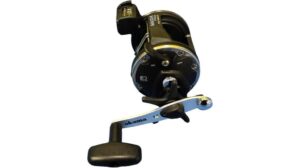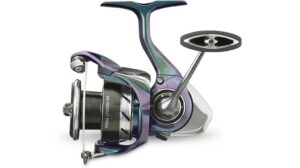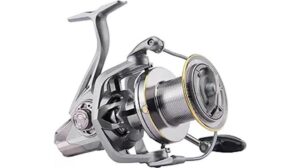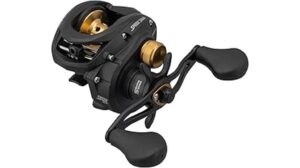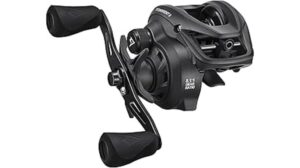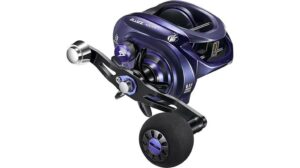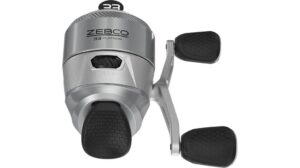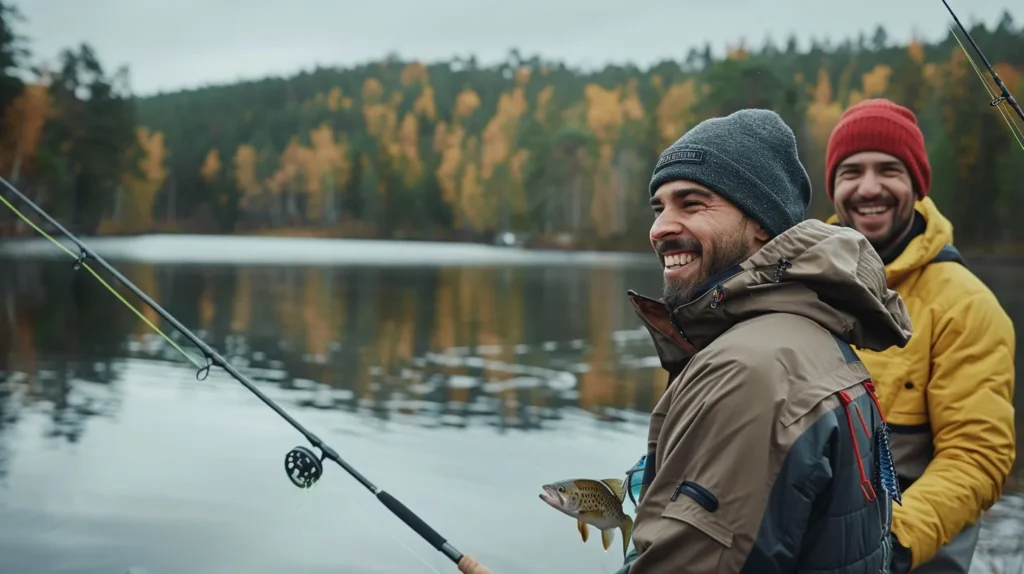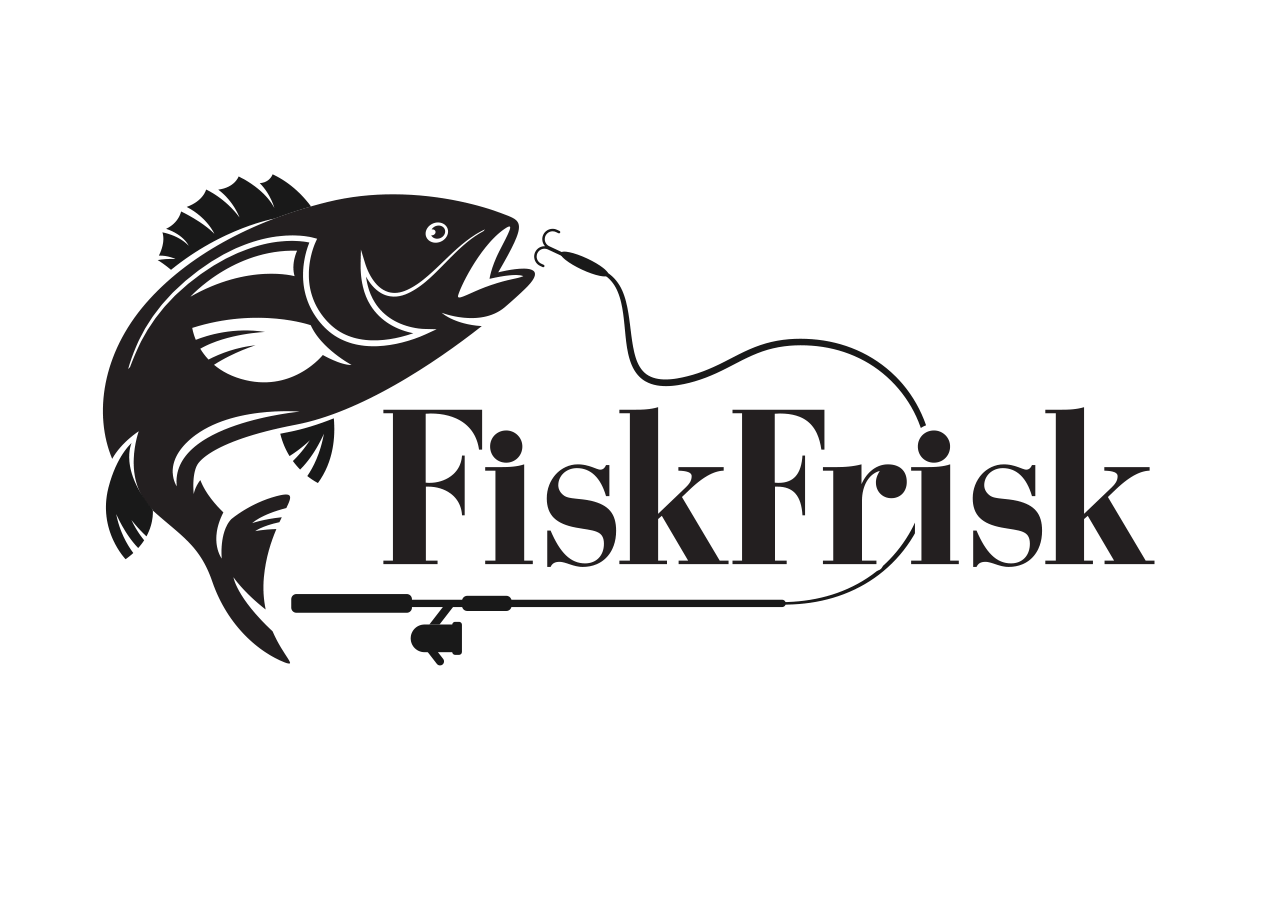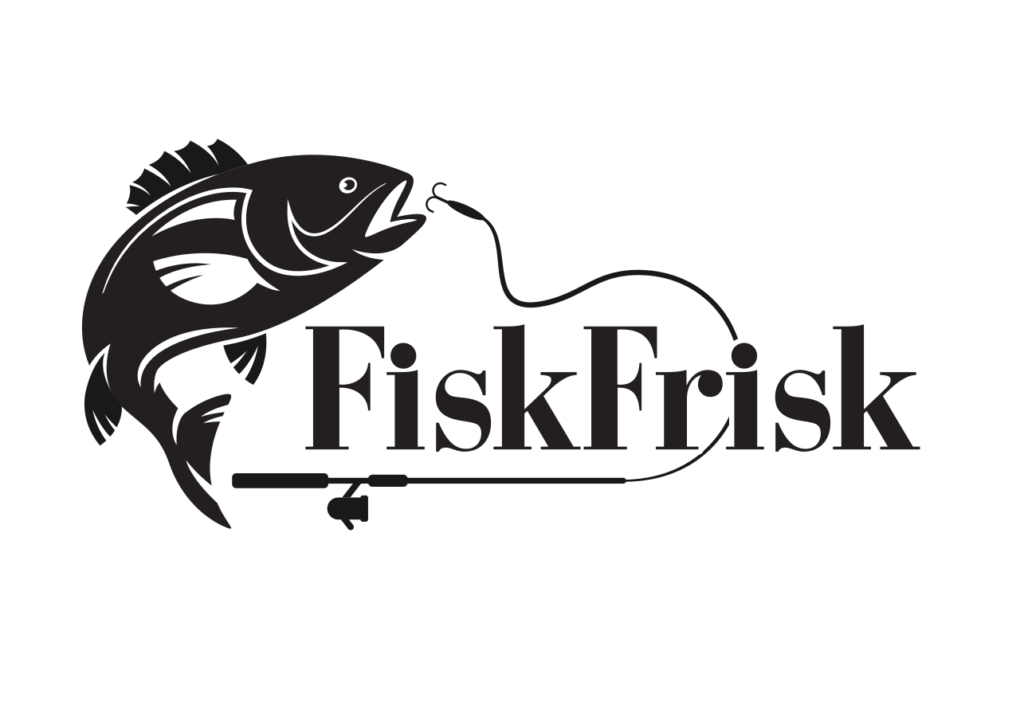We've mastered the art of fly tying, transforming simple materials into lifelike lures that entice even the wariest fish. Our techniques involve selecting the right tools and materials, from natural fibers to synthetic components. We start with basic patterns like the Woolly Bugger and Adams, then progress to advanced methods such as dubbing loops and split-thread techniques. Matching the hatch is essential, requiring keen observation of local insects and their lifecycles. We customize our flies for specific species and water conditions, enhancing their effectiveness. Preservation techniques guarantee our creations remain durable for future use. The world of custom fly tying offers endless possibilities for anglers seeking to elevate their craft.
Essential Fly Tying Tools
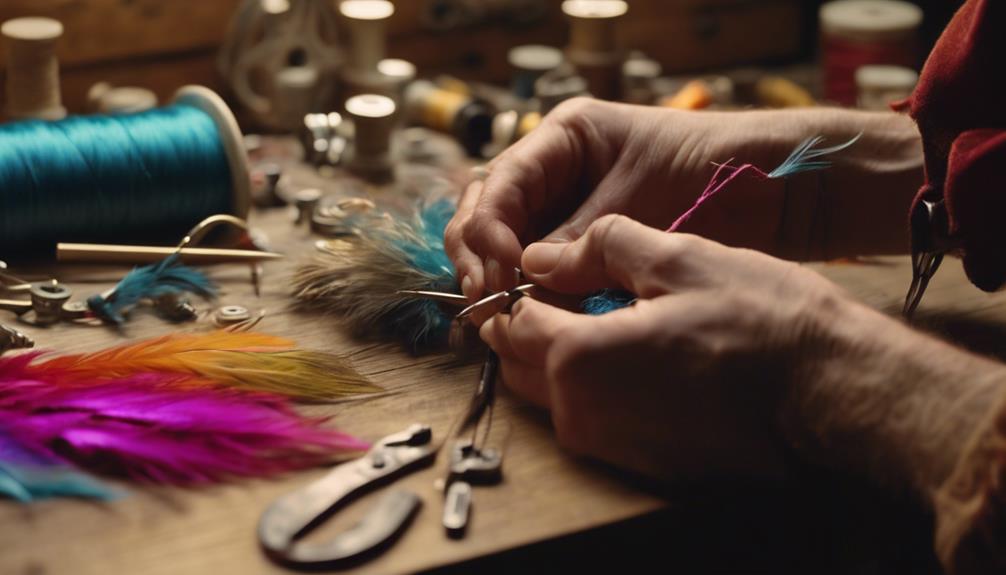
Invariably, successful fly tying begins with assembling the right set of tools, each serving a specific purpose in the intricate process of creating artificial flies. We'll need a vise to hold the hook, bobbin for thread control, and scissors for precise trimming. Other essentials include hackle pliers, bodkin, and whip finisher. These tools, when mastered, allow us to craft lifelike lures that entice fish and bring us closer to nature's delicate balance.
Selecting the Right Materials
With our tools at the ready, we'll now turn our attention to the diverse array of materials that breathe life into our artificial flies. Selecting the right components is essential for creating effective lures. Let's explore three important categories:
- Natural fibers (feathers, fur, hair)
- Synthetic materials (flashabou, foam, rubber legs)
- Thread and wire (for binding and weight)
Each element plays a significant role in mimicking aquatic insects and enticing our piscine quarry.
Basic Fly Patterns
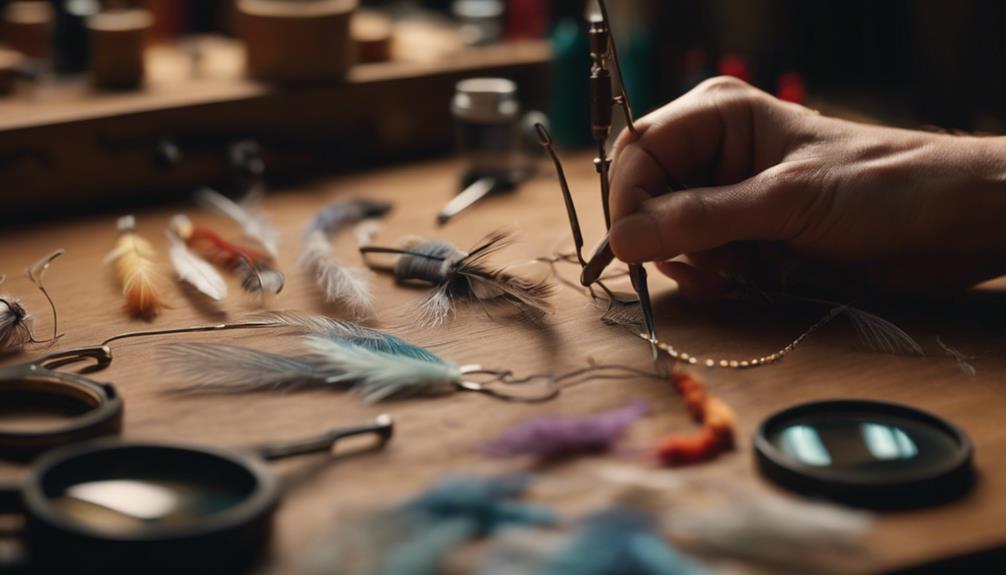
Mastering a few fundamental fly patterns serves as the cornerstone for any aspiring fly tyer's repertoire. We'll explore classic designs like the Woolly Bugger, Adams, and Elk Hair Caddis. These versatile patterns mimic various aquatic insects and baitfish, making them essential for any fly box. By understanding the principles behind these basic flies, we'll develop the skills to create more complex patterns and adapt to specific fishing conditions.
Advanced Tying Techniques
Once you've grasped the basics, it's time to explore advanced tying techniques that'll elevate your fly-tying skills to new heights. We'll investigate intricate methods that enhance realism and functionality:
- Dubbing loops for complex body textures
- Split-thread techniques for seamless wing attachments
- Proportional hackle wrapping for lifelike movement
These methods require patience and practice, but they'll transform your flies into irresistible lures that fool even the wariest fish.
Matching the Hatch
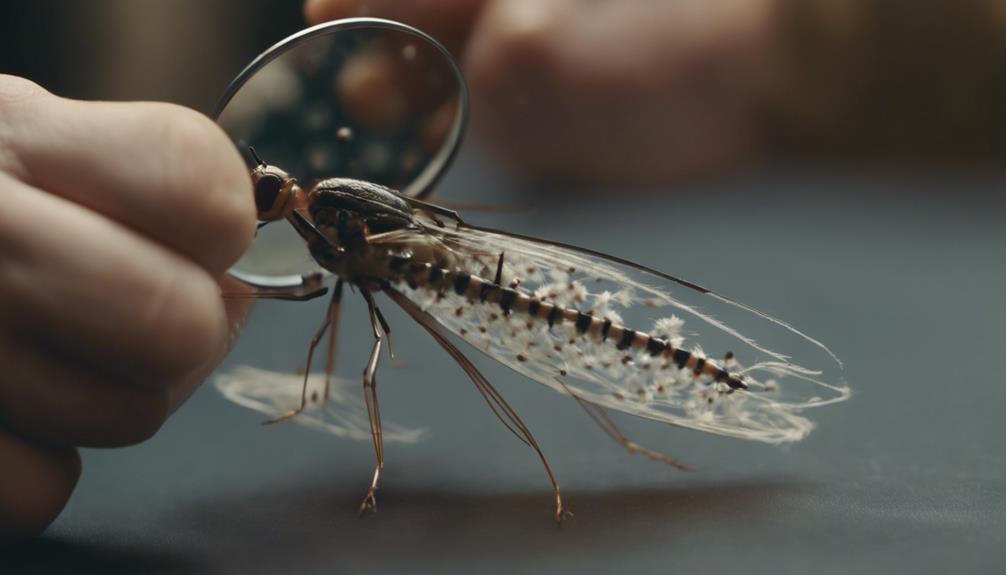
Matching the hatch isn't just a technique; it's an art form that requires keen observation and a deep understanding of aquatic entomology. We must study the local insects, their lifecycle stages, and seasonal patterns. By replicating these natural food sources in our fly patterns, we can greatly increase our chances of success. It's about fooling the fish's senses and tapping into their instinctual feeding behaviors.
Customizing for Specific Species
While matching the hatch is universally beneficial, we've found that customizing our fly patterns for specific fish species can yield even more remarkable results. By tailoring our approach, we've discovered three key factors that greatly enhance our success:
- Behavioral analysis of target species
- Adaptation to local water conditions
- Incorporation of regional prey characteristics
These elements allow us to create highly effective, species-specific lures that consistently outperform generic patterns.
Preserving Your Tied Flies

After investing time and effort into crafting the perfect fly, it's essential to implement effective preservation techniques to guarantee our creations remain in pristine condition for future use. Let's explore some methods to protect our tied flies:
| Method | Materials Needed | Benefits |
|---|---|---|
| UV Resin | UV light, resin | Durability |
| Epoxy | Two-part epoxy | Waterproofing |
| Nail Polish | Clear polish | Quick protection |
| Storage | Fly boxes, silica gel | Long-term preservation |
Conclusion
To sum up, we've explored a range of fly tying techniques that enable the creation of custom lures tailored to specific angling scenarios. By mastering these methods, we've enhanced our ability to mimic natural prey and entice target species. The synthesis of artistry and entomological knowledge has allowed us to craft flies that are both aesthetically pleasing and functionally effective. As we continue to refine our skills, we're constantly amazed by the intricate interplay between science, craft, and the natural world in this fascinating pursuit.
